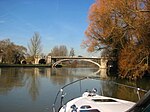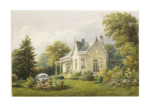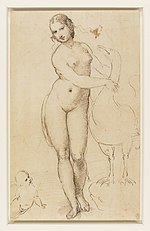Home Park, Windsor
Crown EstateGrade I listed parks and gardens in BerkshireHome Park, WindsorParks and open spaces in BerkshireUse British English from August 2010

The Home Park, previously known as the Little Park (and originally Lydecroft Park), is a private 655-acre (265 ha) Royal park, administered by the Crown Estate. It lies on the eastern side of Windsor Castle in the town and former civil parish of Windsor in the English county of Berkshire. To its south is Windsor Great Park. Home Park is listed Grade I on the Register of Historic Parks and Gardens of Historic England.
Excerpt from the Wikipedia article Home Park, Windsor (License: CC BY-SA 3.0, Authors, Images).Home Park, Windsor
Lime Avenue,
Geographical coordinates (GPS) Address Nearby Places Show on map
Geographical coordinates (GPS)
| Latitude | Longitude |
|---|---|
| N 51.485 ° | E -0.595 ° |
Address
Lime Avenue
Lime Avenue
SL3 9BP
England, United Kingdom
Open on Google Maps









